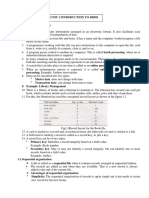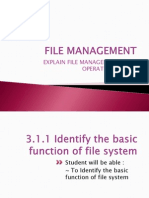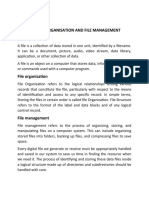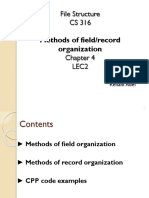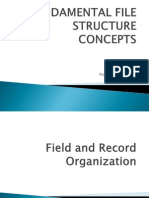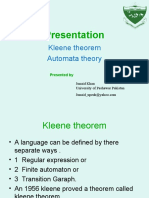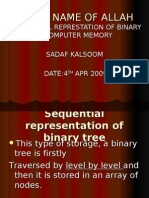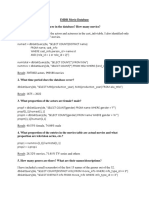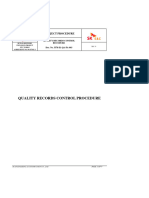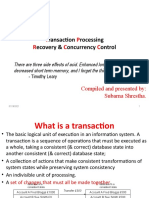0% found this document useful (0 votes)
1K views17 pagesFile Structure and Organization Concepts
This document summarizes fundamental file structure concepts. It discusses files as a stream of bytes with no structure or as a collection of records with fields. It describes key file concepts like records, fields, keys, and different record and field structures. It also covers different types of file organization like sequential, indexed, indexed sequential, and hashed files as well as common file operations.
Uploaded by
Junaid khanCopyright
© Attribution Non-Commercial (BY-NC)
We take content rights seriously. If you suspect this is your content, claim it here.
Available Formats
Download as PPT, PDF, TXT or read online on Scribd
0% found this document useful (0 votes)
1K views17 pagesFile Structure and Organization Concepts
This document summarizes fundamental file structure concepts. It discusses files as a stream of bytes with no structure or as a collection of records with fields. It describes key file concepts like records, fields, keys, and different record and field structures. It also covers different types of file organization like sequential, indexed, indexed sequential, and hashed files as well as common file operations.
Uploaded by
Junaid khanCopyright
© Attribution Non-Commercial (BY-NC)
We take content rights seriously. If you suspect this is your content, claim it here.
Available Formats
Download as PPT, PDF, TXT or read online on Scribd
/ 17










